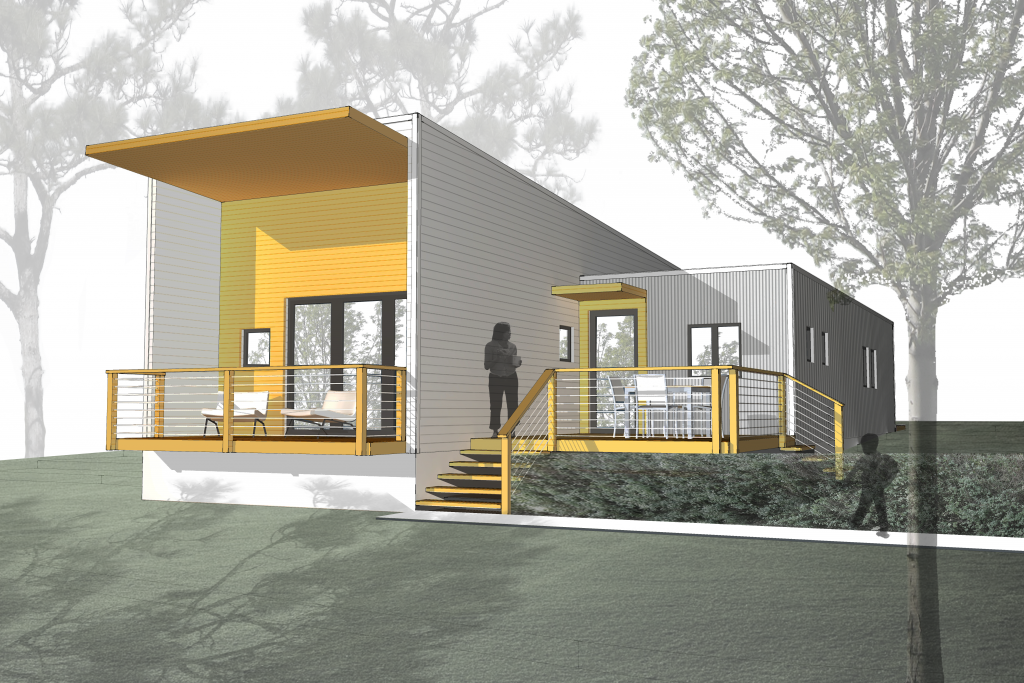Sustainable Design & Affordability

Sustainable design practices need to be intrinsic to all architecture, but can make special contributions to affordable design. It is well known that the construction and environmental control of buildings contribute 40-50% of all greenhouse gas emissions. An equally important figure is that transportation accounts for 20-30%. (The rest is attributed to industry.) Housing providers can no longer justify creating buildings that do not minimize their carbon footprint. Moreover, it is clear that sustainable practices can often significantly contribute to long-term affordability.
David Brown states in the introduction to The Home House Project that, “Affordable Housing is a noble cause with a bad history.” 1 Many have pointed out the mistakes of the past, in which affordability was viewed as predominantly achieved by utilizing economies of scale and minimizing up-front land, design, labor and material costs. Too often this meant that affordable housing developments were located on remote sites and disconnected from context, commerce and transportation; were designed according to bottom-line instrumental metrics at the expense of the creation of context-responsive, energy-efficient, healthy and convivial environments; were inefficient in their use of energy, water and materials; and often created unhealthy interior environments due to material use and degradation.
From an urban design position, sustainable urbanism can reduce overall environmental impacts and create healthier environments. These approaches align with the integral model for sustainable urbanism proposed by Mark Roseland, which outlines three principal areas essential to sustainable urbanism – Community Conviviality, Environmental Viability and Economic Adequacy. Community Conviviality focuses on the quality of life issues of walkable communities, connected by multi-modal transit choices, with close proximity of shopping, services, recreation and community events. Environmental Viability includes sustainable building practices that aim for a minimal carbon footprint, substantial transit choices, and regeneration of the environment through parks, greenways, native plantings, recycled building materials and community gardens. Economic Adequacy addresses social equity issues through the incorporation of workforce and affordable housing, adjacent retail and community services, and a range of transit choices. 2
Sustainable development and architecture can lower annual operating costs for housing developers, which may enable them to build more or better affordable units. It can also lower these costs for homeowners, thus freeing up funds for other living expenses or savings. It can be achieved through a broad range of means, including:
Efficient land-use
- Locating housing within established city or town centers to incorporate existing infrastructures.
- Choosing sites near public transportation, shopping, schools and other daily needs to minimize the need for automobiles or their use.
Energy, water and material efficiencies
- Orientation and configuration of units, outdoor spaces and parking to achieve passive strategies.
- Achieving low-energy building performance through incorporating Leadership in Energy and Environmental Design (LEED TM) and Energy Star checklists, including: High R-value thermal insulation, high E windows, efficient heating, ventilating and air conditioning, hot water heaters and geo-thermal options.
- Creating developments that use water efficiently and minimize storm water runoff.
- Designing efficient units that reduce energy use, minimize construction waste and utilize durable and easy/inexpensive to repair equipment, fixtures, hardware and finishes.
Healthy Environments
- Using environmentally responsible materials with low embodied energy and clean manufacturing processes.
- Choosing materials and finishes that do not produce unhealthy interior environments.3
Notes
1 David J. Brown, Ed., The Home House Project: The Future of Affordable Housing, Cambridge, MA: the MIT Press, 2004, p. 19.
2 Eco-City Dimensions – Healthy Communities, Healthy Planet, by Mark Roseland, Ed., New Society Publishers, 1997.
3 Walker Wells, Ed., Blueprint for Greening the Affordable House, Washington: Island Press, 2007, pp 2 -3.